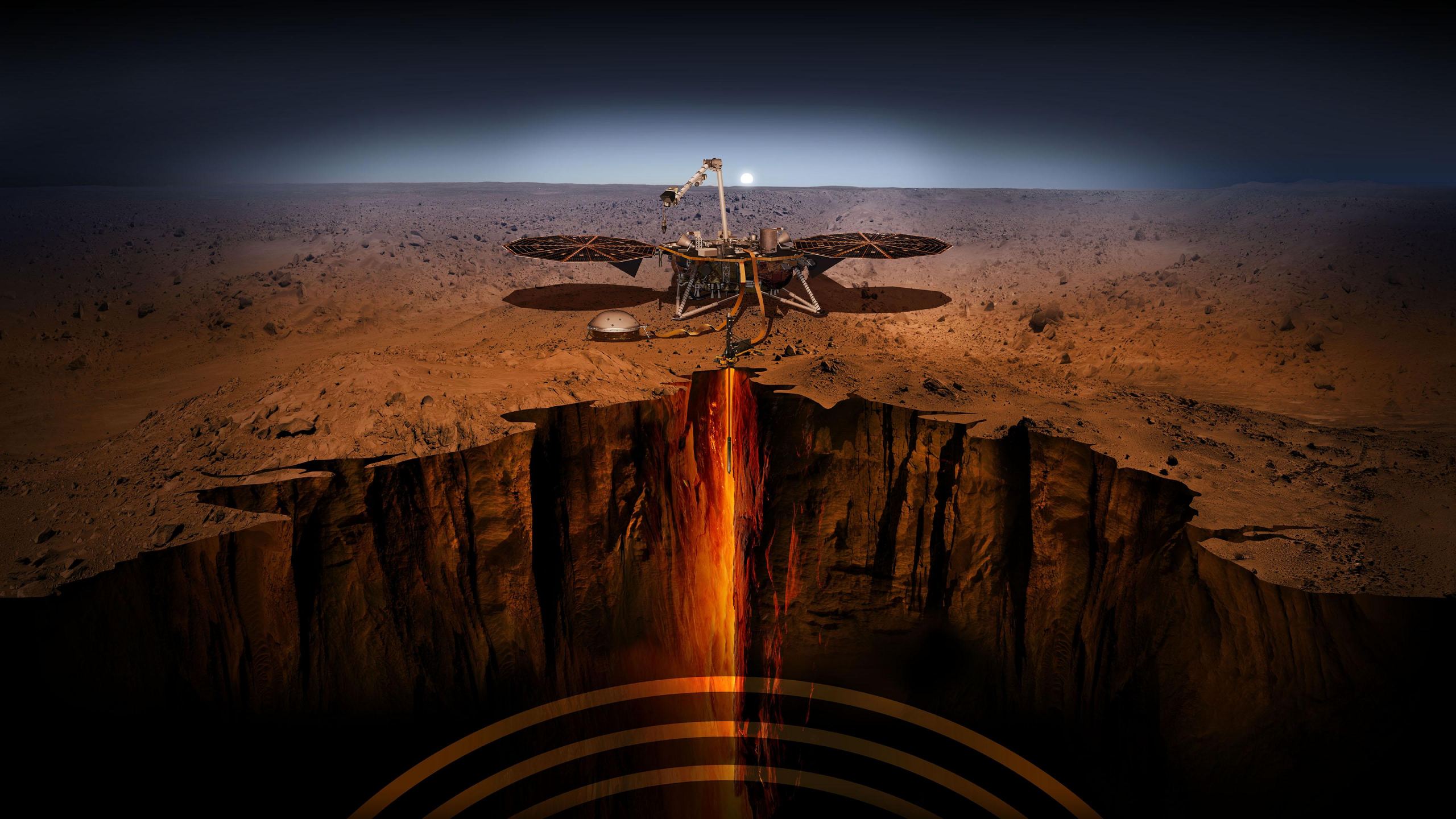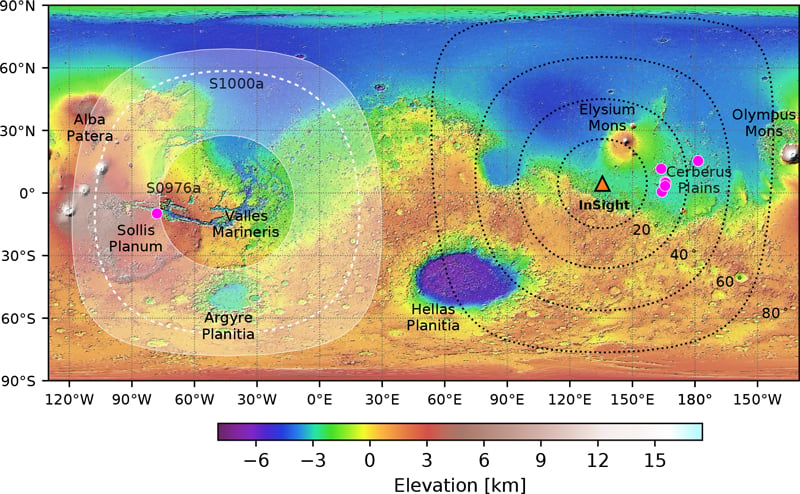On Nov. 26th, 2018, NASA's Interior Exploration using Seismic Investigations, Geodesy, and Heat Transport (InSight) lander arrived on Mars. Since then, this robotic mission has been using its advanced suite of instruments to study Mars' interior and geological activity to learn more about its formation and evolution. One of these is the Seismic Experiment for Interior Structure (SEIS), the lander's primary instrument, which was deployed on the Martian surface less than a month after it arrived.
On August 25th, 2021, the mission detected a magnitude 4.2 and a magnitude 4.1 marsquake, the two largest seismic events recorded to date. These events (labeled S0976a and S1000a, respectively) were five times stronger than the previous largest event (a 3.7 marsquake in 2019) and the first that originated on the other side of the planet. The seismic wave data from these events could help scientists learn more about the interior of Mars, particularly its core-mantle boundary.
This research was conducted by Anna Horleston, a senior research associate with the School of Earth Sciences Geophysics at the University of Bristol, and an international team of geophysicists and seismologists. As they indicated in their findings, which appeared in the InSight's Marsquake Service (MQS) report in *The Seismic Record*, they were able to trace where the events came from based on their body waves - which consist of the faster primary (PP) waves (aka. longitudinal) and slow-moving shear (SS) waves (aka. compressional).
The larger of the two (S0976a) was traced to Valles Marineris, one of Mars' distinguishing geological features and the largest canyon system in the Solar System. Earlier images of cross-cutting faults and landslides in the region, taken from orbit, suggested that Valles Marineris was seismically active. But this latest event is the first time that seismic activity has been confirmed there. The second, S1000a, occurred 24 days later and was the longest event on record, lasting 94 minutes.
Unfortunately, the researchers could not pinpoint the origin of S1000a beyond establishing that it also came from the far side of Mars. Their results showed that it could have occurred anywhere within 65° of an area centered on the eastern end of Vallis Marineris (see map below). They also confirmed that both marsquakes occurred in the "core shadow zone," a region that alters the path of longitudinal and compressional waves.
This means that the waves do not reach a seismometer directly but are reflected off the core at least once before reaching the other side of the planet. Savas Ceylan, a co-author from ETH Zürich, explained the significance of these detections in a recent Seismological Society of America (SSA) press release:
“Recording events within the core shadow zone is a real stepping stone for our understanding of Mars. Prior to these two events, the majority of the seismicity was within about 40 degrees distance of InSight. Being within the core shadow, the energy traverses parts of Mars we have never been able to seismologically sample before.”
While both marsquakes originated on the far side of mars, they also differed in some key respects. In short, S0976a was characterized by only low-frequency energy (consisting of reflected PP and SS waves) and was likely much deeper in origin. Meanwhile, S1000a had a very broad frequency spectrum, including low-amplitude Pdiff waves that traversed the core-mantle boundary. This was the first time that InSight detected this kind of seismic energy, which could reveal new insights into Martian seismology.
In the end, said Horleston, both events are outliers are far as the InSight seismic catalog is concerned:
“[S1000a] is a clear outlier in our catalog and will be key to our further understanding of Martian seismology, Not only are they the largest and most distant events by a considerable margin, S1000a has a spectrum and duration unlike any other event previously observed. They truly are remarkable events in the Martian seismic catalog."
“The latter event has a frequency spectrum much more like a family of events that we observe that have been modeled as shallow, crustal quakes, so this event may have occurred near the surface. S0976a looks like many of the events we have located to Cerberus Fossae – an area of extensive faulting – that have depths modeled to be around 50 kilometers or more and it is likely that this event has a similar, deep, source mechanism.”
Further Reading: Seismological Society of America (SSA)
 Universe Today
Universe Today

